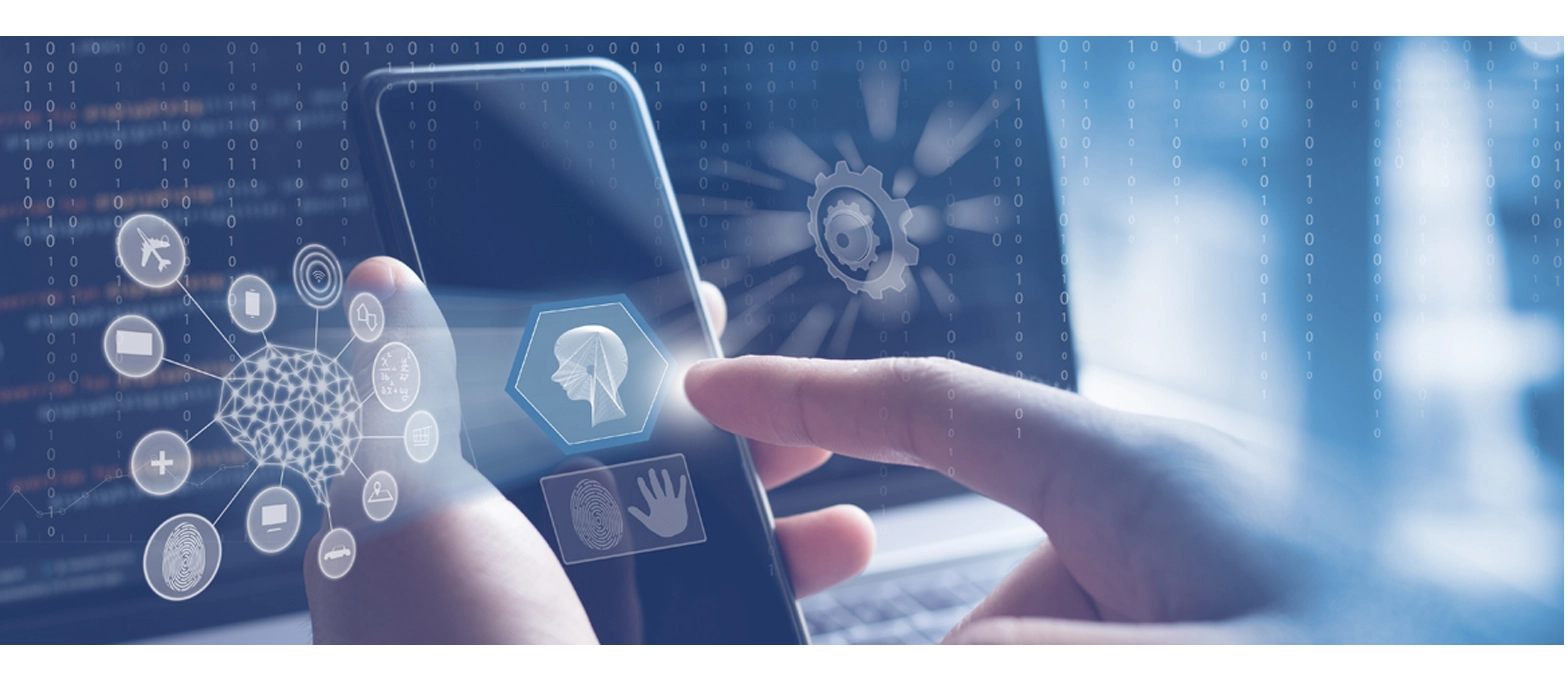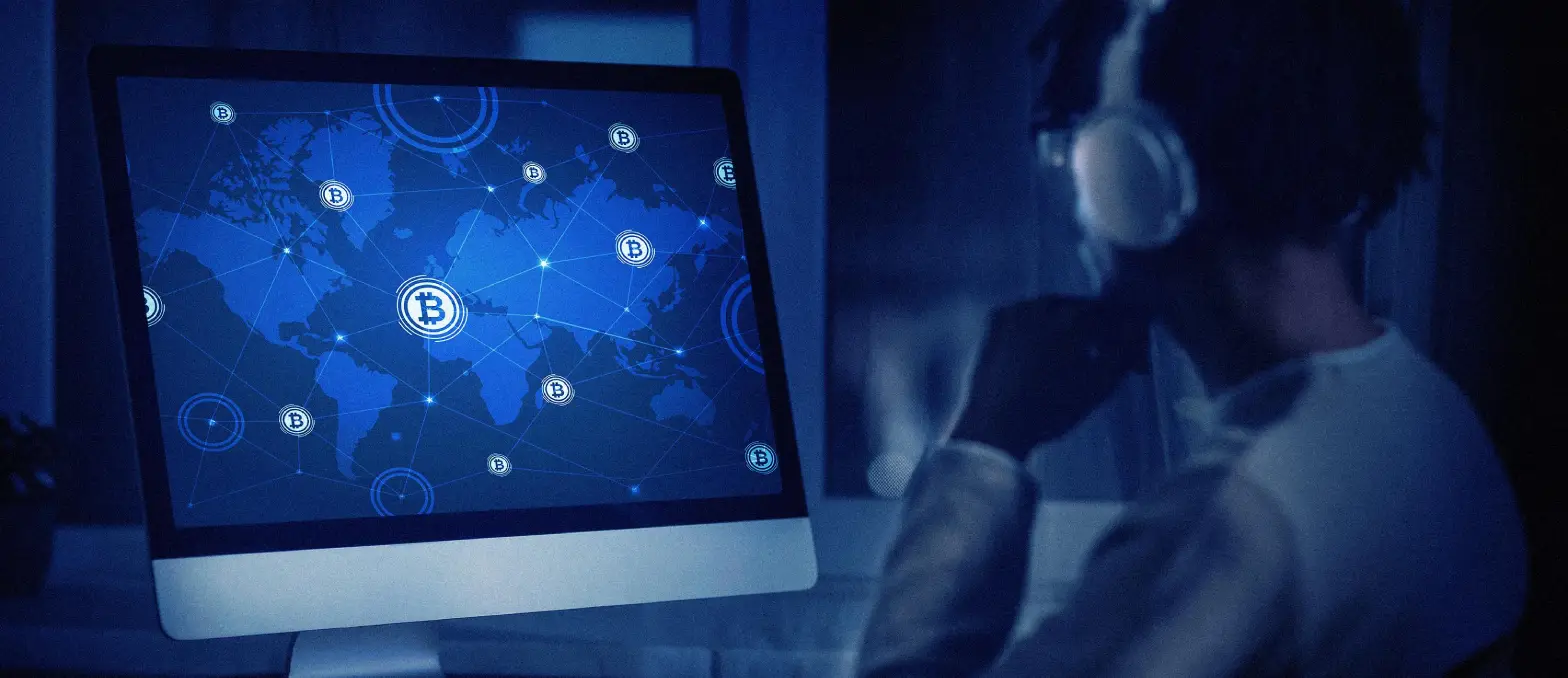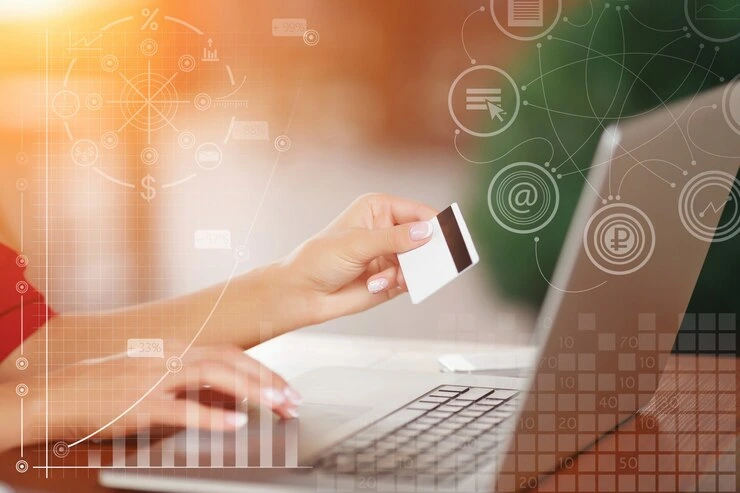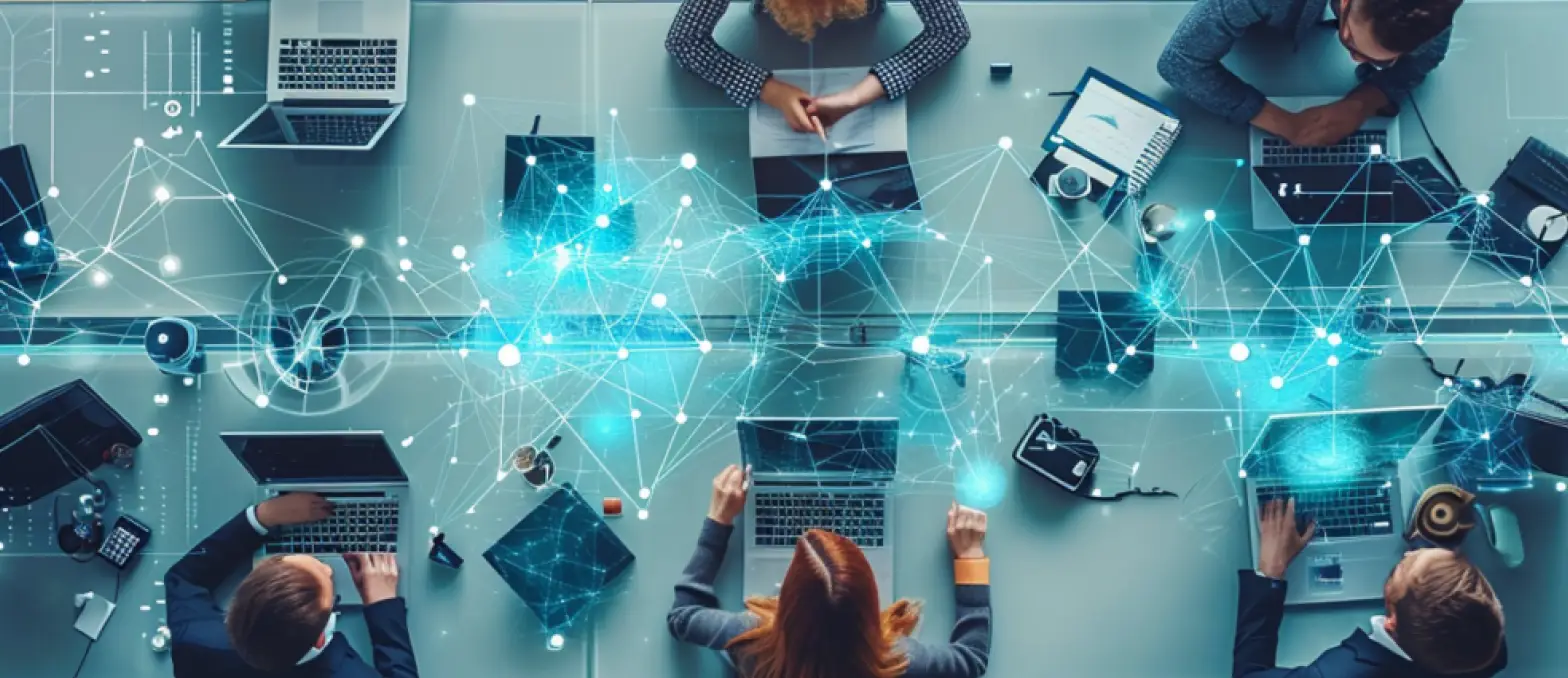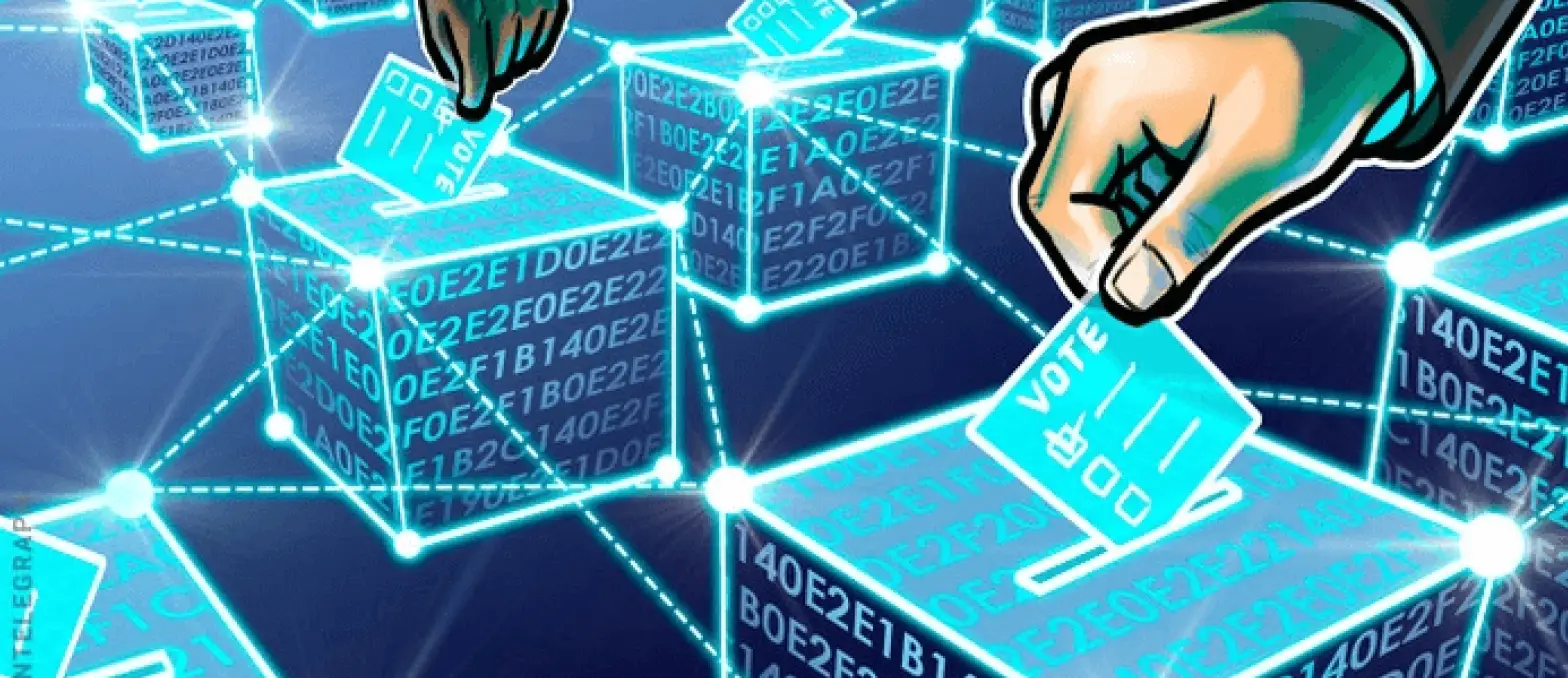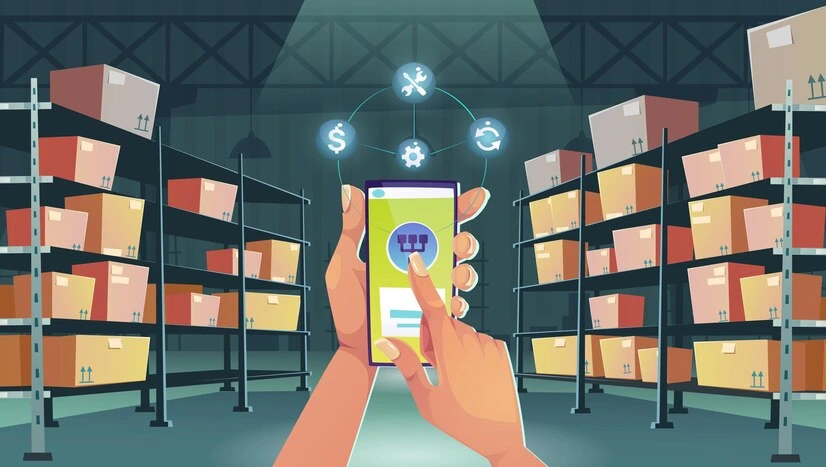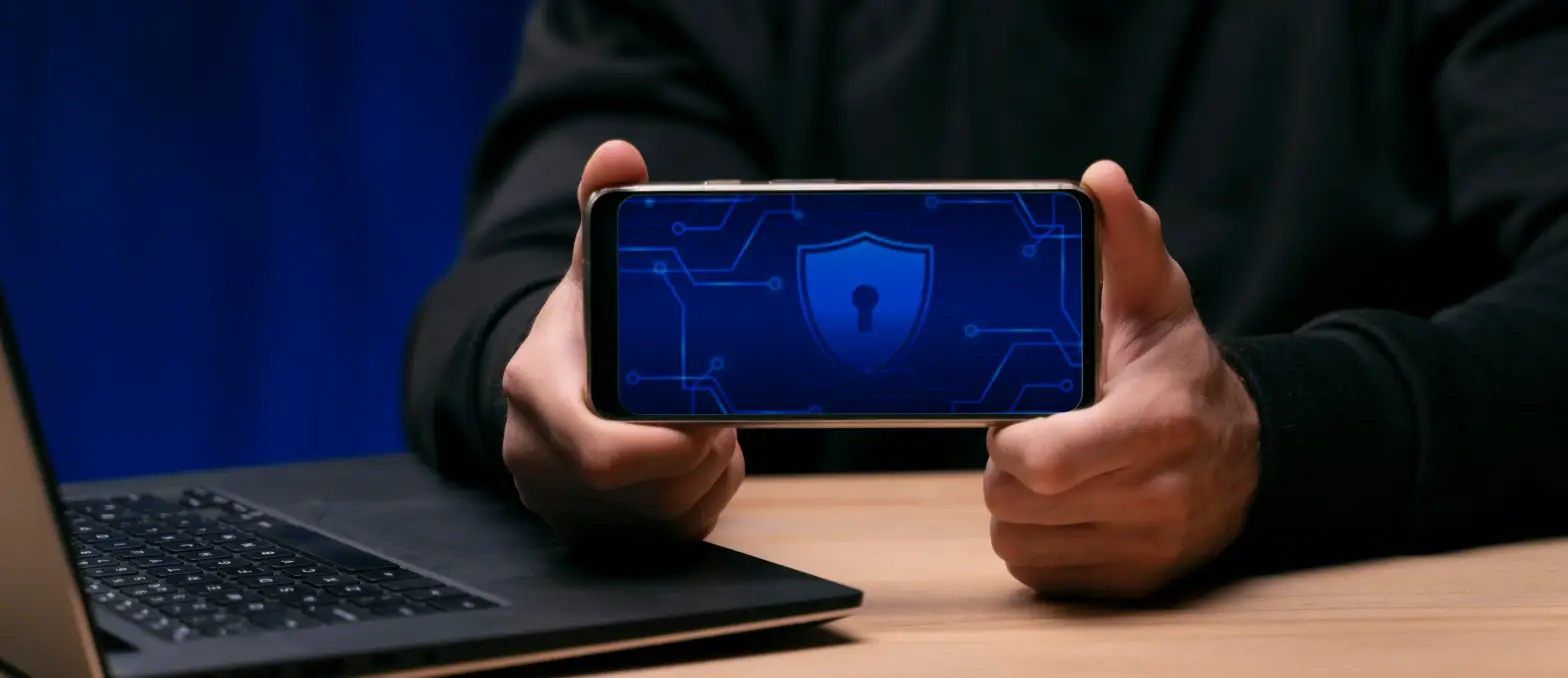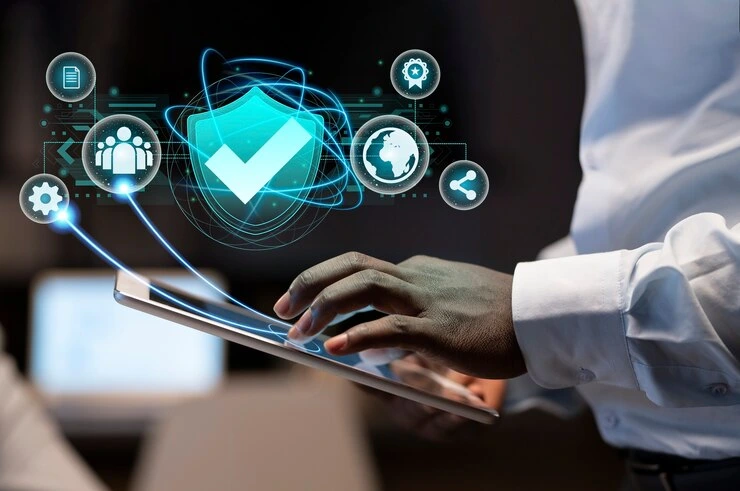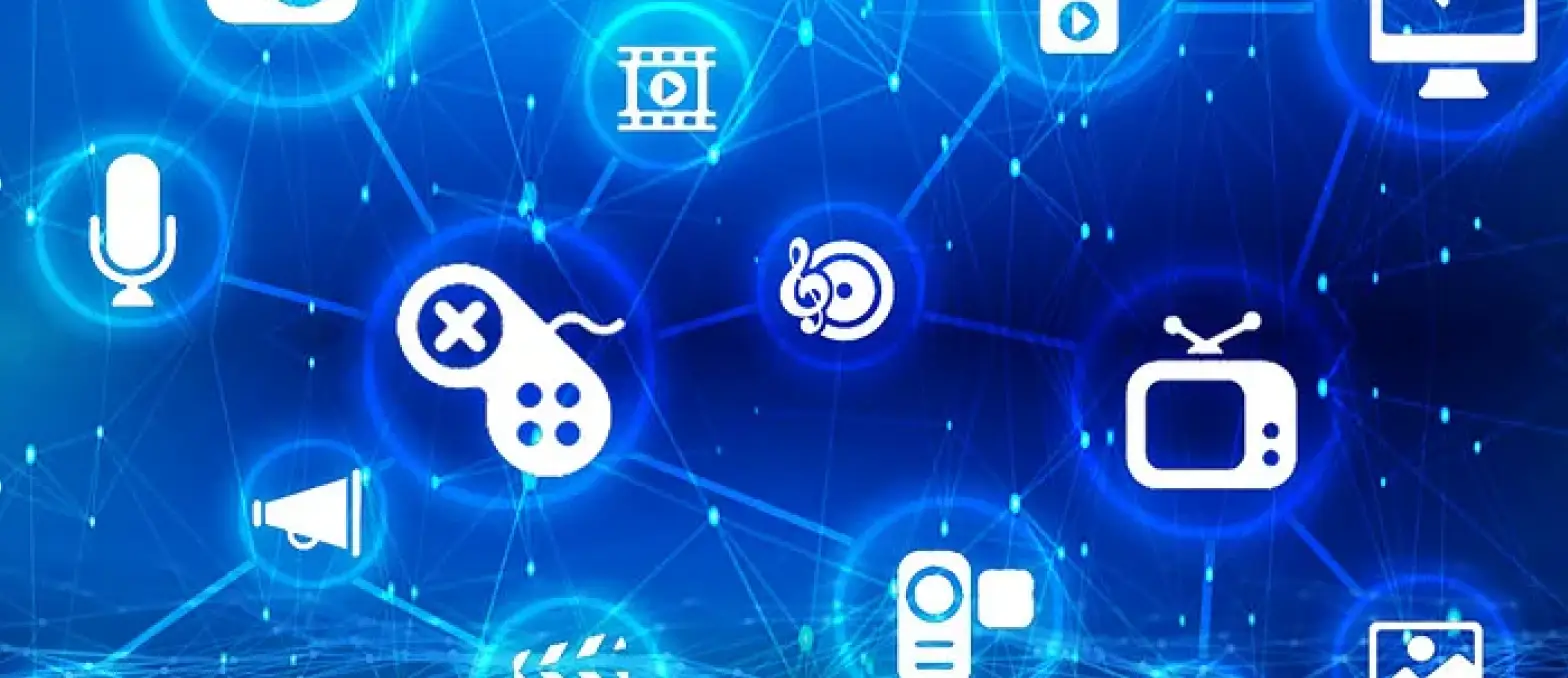The Internet of Things (IoT) has transformed the retail industry, driving significant innovations in both physical and digital stores. This innovative technology provides retailers with crucial insights from data, helping them transform business processes. Smart sensors collect valuable data, enabling retailers to analyze customer preferences and boost sales while enhancing automation and management. Retail Stores constantly use new technologies, such as cloud beacons, RFID, mobile, and many more, to offer shoppers integrated retail services and superior shopping experiences. Over 70% of retailers believe IoT will greatly impact their future operations. Curious about applications of IoT in retail and its effect on e-commerce? Keep reading to learn more.
Market Statistics of Applications of IoT in the Retail Industry
- The global IoT market size in retail was estimated at $47.23 billion in 2023 and is expected to increase to $350.85 billion in 2032, with an annual growth rate of 25.4% over the forecast timeframe (2024-2032).
- The IoT in the retail industry will be $177.90 billion in 2031. This is expected to grow at 20.3% from 2022 until 2031. (Research and Markets)
- The worth of the retail IoT environments is anticipated to range from $5.5 trillion to $12.6 trillion in 2030. (McKinsey)
- Regarding the deployment method, cloud computing is expected to have the largest CAGR of 23.1% between 2021 and 2031. (Allied Market Research)
- Self-checkout and marketing personalization are expected to create the highest value in economics among the various use cases of IoT in retail between 2020 and 2030. (McKinsey).
Top 20 Use Cases of IoT in Retail Sector
The emergence of IoT in the retail industry has revolutionized how retail businesses operate and interact with customers. Modern technologies and novel methods are causing major changes in this area. Here are the most important IoT retail application cases that will shape the future of this industry.
Smart Inventory Management for Efficient Stock Control
Optimizing supply chain processes is among the most important challenges in the retail industry. According to Gartner, the supply chains at the top utilize the Internet of Things in their operations. Additionally, if you use technology, you eliminate human error while tracking inventory. These are the top devices that are extensively utilized in the inventory management process:
- RFID Tracking and Tagging: The process of loading an RFID tag with information and affixing it to an object to make it an asset-tracking system.
- Smart Shelves: The shelves are electronically connected to keep track of stock. When the shelves become empty, the retailing authority notifies the authorities.
- Automated Refill Systems: The system generates orders whenever inventory levels fall.
Digital Shelves and Automated Restocking
Track products to ensure they are always in stock and prevent items from being lost on shelves. Equipped with weight sensors, RFID tags, and readers, Smart Shelves permit the scanning of products on display and stock shelves. This makes inventory processes efficient and precise. In addition, by linking each RFID tag to the readers, Smart Shelves can detect theft inside the store, thereby costing fewer security cameras and personnel.
Checkout Automation for Faster Transactions
Automated checkout or self-check-out systems can make shopping more enjoyable for customers. Customers log in to their online accounts and go into the store. Through sensors embedded in the shelves with smart sensors capable of transmitting signals to applications used by the user, every item taken off the shelves would get added to the customer’s virtual cart and reversed. The customers can then leave the shop and pay their balance using their apps.
IoT-Powered Retail Energy Management
Have you observed that shops with many people seem more sluggish than shops with fewer customers? This isn’t a random phenomenon. At retail shops, it is possible to control lighting automatically using IoT solutions.
Intelligent lighting systems automatically alter their brightness, shutting off when customers aren’t in the area or boosting brightness during peak times. This saves money.
Personalized Customer Experiences with IoT
IoT abilities and machine learning algorithms can precisely analyze consumer data to tailor shopping experiences. Bluetooth Light Energy (BLE) beacons can help you personalize your shopping by sending alerts and messages about special sales and seasonal smartphone promotions based on a customer’s geographical proximity.
Wearable IoT for Human Resource Monitoring
Wearable IoT devices, such as smartwatches and wearable sensors are changing the management of human resources in retail by providing insight into employees’ productivity, well-being, and security. These devices allow employees to monitor their physical activities, health indicators, and routines.
In retail settings, managers can monitor data such as employee movements in energy levels, movements, and stress indicators to improve shift schedules, lessen fatigue, and ensure the safety of employees.
Wearable IoT devices can help ensure compliance with workplace safety rules in areas where employees risk injuries, such as storage facilities or distribution centers. This data-based approach enhances productivity and increases employee health, leading to a healthier work environment.
Loss and Theft Prevention with Smart Technology
Employee theft, shoplifting, and theft of suppliers cause companies to be unable to pay millions of dollars.
With IoT, companies can use geofencing equipment with RFID to define physical boundaries around their location.
For instance, a store can install geofencing around exits or near the checkouts. If a person attempts to cross the boundary and the alarm goes off, it alerts the store manager, and the store manager is alerted.
Geofencing also monitors employee movements. Sometimes, employees also steal to protect themselves from this.
Buyer Behavior Tracking through IoT Insights
To improve the customer experience, a business must comprehend the complete interactions of customers at every step within the store. You’re keeping track of the customer’s journey to learn their preferences and overall buying habits. This gives you greater opportunities to deliver the best customer experience possible, accelerating your company’s growth.
IoT can assist you in improving customer experience in many ways:
- Beacon Technology: Send welcoming messages or offers to customers who walk into your store directly on their phones.
- VR and AR allow customers to look at furniture and home decor with smartphones or in-store AR devices.
- Personalized Experience: Your store can gather the required information using multiple sensors to tailor its customers’ experiences.
- Supply Chain Optimization: Supply chains are a mess and have many silos that retail owners are seeking to resolve. These silos can be a result of effective tracking of the shipments and collaboration platforms for analysis. But, IoT can be beneficial in removing some silos.
- Live tracking for shipment: IoT sensors can provide real-time information such as temperature, location, and more, giving you more control over your assets.
- Predictive Maintenance: Use data from IoT devices to access equipment and machines or anticipate their failures to ensure your retail business remains in good condition.
- Supplier Collaboration Platform: Collecting, saving, sharing, tracking, and storing all the suppliers’ information to help establish effective relationships.
IoT-Enabled Sensors for Onsite Repairs
Predictive maintenance is the process of fixing equipment issues before they become critical. This will save costs since prevention is always cheaper than a solution.
Cash registers, vending machines, and other devices are integrated with sensors that can monitor their condition and send information to an AI-enabled system. If something goes wrong and a notification or alert is issued, it will inform the user that maintenance is needed, and the workers can repair the machine before it becomes damaged.
Retailers can put commercial sensors in storage facilities for food parking areas and warehouses that monitor temperatures, humidity, light, and air quality. If these aspects are not in order, an immediate alarm occurs. You can create reports to monitor trends and patterns in time using the software you choose and automate security tests.
Seamless In-Store Navigation with IoT
IoT technology is improving the shopping experience in stores by providing seamless navigation options for customers. With connected devices such as smart beacons and mobile apps, retailers can direct shoppers around their stores precisely, aiding them in finding the right products quickly. For example, shoppers can get personalized maps and directions on their phones, guiding them to the correct aisle.
This feature not only improves customers’ convenience but also increases their satisfaction, as it reduces the time spent looking for products.
Connected Supply Chain and Logistics Management
RFID and GPS technology allow retailers to track and examine every item in warehouses, in transit, and even on shelves. Sensors connected to the internet provide a continuous stream of data in real time, starting from floor level to retail store. They help to identify bottlenecks, plan contingencies, optimize routes, and speed up product delivery. This technology also allows suppliers, manufacturers, and distribution centers to reduce shipping and handling times while ensuring quick delivery to consumers and vendors.
Smart Mirrors for Enhanced Shopping Experiences
The COVID-19 epidemic has made people more aware of what they touch. Shops have, therefore, started incorporating ways to assist shoppers in making purchases with a touchless experience.
For instance, smart mirrors use Augmented Reality and Computer Vision to let shoppers try on clothes virtually without wearing them.
Touchless interfaces can also be helpful. They let users interact with objects using gestures or facial expressions.
Emergency Response Systems Powered by IoT
Intelligent emergency systems based on IoT technology can detect various situations, including gas leaks, fires, and security dangers. Sensors can detect the environment’s conditions and send notifications if something isn’t right. They can notify store managers or other emergency personnel in real time and help in a timely emergency response. This is why integrating IoT to assist in emergencies can help retailers increase safety by reducing the risk of losses and preventing injuries to property and people.
Warehouse Automation and Robotics for Retail Efficiency
With connected devices, warehouses can be upgraded as never before.
Warehouse robots have evolved from science fiction into reality. Many companies utilize these robots to cut down on labor costs, speed up fulfillment, and optimize shelves. They’re compact, energy efficient, and connected via the Internet, which allows administrators to adjust them in bulk as needed.
Smart sensors can also assist. They track the storage conditions (humidity, stability, temperature, etc.) alert the owners of any issues, and notify them when anything goes wrong. This prevents human error and helps avoid losses or, at the very least, minimize losses. It also automatically allows them to order additional items when stocks are low.
When performing mundane tasks, such as locating lost items or shelf capacity, robots help human employees and allow them to concentrate on more complex tasks related to customer service. For instance, the American chain retailer Target employed a robot called Tally to wander the aisles and manage inventory.
Smart Packaging and Product Tracking with Retail IoT
Smart packaging utilizes IoT sensor technology and RFID tags embedded into packages or items to provide real-time data tracking and sharing. Retailers, for instance, can greatly improve supply chain transparency in inventory management, transparency, and even consumer involvement.
Retailers can track the movement of products from shelf to warehouse, ensure accurate stock levels, and minimize loss due to loss or theft. Smart packaging also provides personalized experiences for customers, like interactive labels that provide details about the product or directions for usage by scanning a smartphone.
Dynamic Pricing Systems for Real-Time Price Updates
In economics, there’s the idea of menu cost, which suggests that in times of high inflation, printing the new price tag and menus will cost more to reflect the increase in costs. At the very least, a digital price tag or digital signage allows for dynamic pricing.
Sustainability Tracking in Retail with IoT
Retail operations require a lot of resources that can prove detrimental to the business and the environment. Product loss or waste caused by poor inventory management, inadequate conditions for shipping and storage, inefficient staff management, and many other issues can be addressed by connecting with an IoT development company. IoT technology can track items, shopping, and storage conditions to effectively distribute resources and maximize their use.
IoT-Enabled Kiosks for Enhanced Customer Service
IoT-enabled kiosks can collect real-time sales information, monitor inventory levels, and automatically start restocking when necessary. This reduces the risk of stockouts and increases operational efficiency.
Smart Vending Machines for Instant Shopping
Smart vending machines with IoT connectivity transform the retail experience for customers by providing them with greater convenience and personalized interactions. These machines can track inventory levels, track temperature for perishable goods, and even analyze consumer preferences to suggest the most popular items or promotions. Retailers can benefit from real-time information about machine use, which allows efficient restocking and reduces operational expenses.
Smart vending machines can accept payments via digital devices, offer customers a seamless experience, and offer opportunities for marketing via targeted advertisements that appear across their display screens. This makes for a more exciting and efficient retail experience, satisfying the demands of modern consumers for speedy, technology-driven services.
Smart Shopping Carts for a Seamless Store Experience
Every year, $800 million worth of shopping carts is stolen. Each year, the global estimation of theft is $800 million. Furthermore, visit any big strip mall or store, and you’ll see all the carts scattered throughout the areas where people left them before departing. The cost of replacing stolen carts and the hours searching for and then relocating the carts could be avoided.
Retailers can mark their existing carts using motion sensors and connect them to an asset tracking program to determine the cart’s location to facilitate retrieval. There’s a chance for smart carts with the ability to track their surroundings. This won’t require any add-ons.
Benefits of Implementing IoT in Retail
IoT use in the retail sector is growing in popularity for several reasons. It helps develop business models, understand consumer behavior, optimize processes, and increase employee productivity. Let’s examine the main advantages of implementing IoT applications in retail.
Enhanced Customer Service
IoT abilities and machine learning algorithms could precisely analyze consumer data to customize shopping experiences. Bluetooth Light Energy (BLE) beacons allow you to personalize your shopping by sending out alerts about discounts and seasonal deals on smartphones based on shoppers’ proximity.
Convenience
Making shopping as easy and enjoyable as possible is a great way to make your customers happier and improve your profit. IoT for retail businesses provides many opportunities to do exactly that.
Automated checkouts are an excellent illustration. Simple ones let shoppers carry their bags and pay for them as they go. More sophisticated ones, like those that Amazon is rolling out, only require customers to scan the barcode with their phones as they enter a store. Then, they’ll instantly be charged on their mobile phones for their purchase items.
Increased Security
IoT devices such as CCTV cameras and sensors could be utilized to protect the security and integrity of stores. This, in itself, isn’t new and has been in use for a while. However, it’s important to remember that not all devices that use the Internet of Things are cutting-edge. Certain devices are familiar to us, but only under the new buzzword.
Real-time data and analytics
IoT sensors and devices gather much data about inventory levels, product types, and customer behavior. The capability to gather information in real-time, which IoT can provide, in conjunction with AI and other analytics tools, can provide valuable insight, predictions, and intelligent solutions. By analyzing data gathered by IoT solutions, retailers can streamline processes, reduce risks, and deliver high-quality products to their customers.
Waste management
Systems for tracking connected to a network can help companies save millions of dollars by reducing all kinds of waste, including damaged products and food products, expired energy and heat, etc. IoT devices can monitor the environment in which the products are kept and the temperature of stores and then relay the data to a database and systems that can adjust their settings by themselves or through human input.
Legal and Regulatory Considerations for IoT in Retail
Compliance with Data Protection Regulations and Ensuring Transparency
IoT devices in retail collect huge amounts of information, including customer information. Retailers must adhere to data protection laws, such as the General Data Protection Regulation (GDPR) in Europe or the California Consumer Privacy Act (CCPA) in the U.S. The regulations oblige retailers to ensure that customer data is collected, kept, and processed securely. Transparency is essential. Retailers must inform customers about how their data is processed and offer an opt-in or opt-out option to ensure conformity.
Strong Security Protocols
With the increased connection of IoT devices comes an increased chance of cyberattacks. Retailers must implement strong IoT security protocols, like security networks, encryption, and periodic security audits, to safeguard against security breaches. Insecure IoT systems could result in reputational and financial damages and legal liability.
Ensuring Compliance with International Data Transfer Laws
Many retail IoT systems can operate globally, and therefore, compliance with international data exchange laws is vital. Regulations like the GDPR are very strict regarding the transfer of data outside of the European Economic Area (EEA). Retailers must comply with these standards using legal transfer mechanisms such as Standard Contractual Clauses (SCCs) or Binding Corporate Rules (BCRs).
Complying With Product Safety Regulations
Retail IoT devices should also comply with product safety regulations to ensure the safety of consumers. This means adhering to guidelines regarding the quality of hardware, software updates, and electrical safety regulations.
Leverage Our IoT Expertise to Position your Retail Business in a Competitive Market
At A3Logics, we are experts in harnessing the role of IoT in retail to revolutionize your business. We know the dynamics of the retail industry and the crucial role technologies play in its growth.
Our service for IoT app development for the retail industry is designed to give you an edge in the market with seamless integration and the best performance. We are proud of our ability to develop new, flexible, safe IoT solutions that increase efficiency, improve customer experiences, and increase sales.
Our holistic approach encompasses technology implementation and a strategic plan to ensure our IoT solutions perfectly align with your company’s goals.
The Key Takeaway
Retail’s future lies in the intersection of the digital and physical worlds. Therefore, integrating IoT into the retail industry isn’t just an option but a must for retailers to succeed in this competition.
The rising demand for data analysis and analytics integration and a growing business demand for affordable solutions (software and hardware) will fuel the expansion of IoT within retail over the next few years.
Many successful IoT use cases in retail show how IoT solutions, despite being expensive, bring many advantages to retailers. These range from better inventory and supply chain management to a great customer experience through the use of IoT to power shelves and self-checkouts.
So, if you delay introducing IoT in your company, you could miss out on the opportunities and benefits that it can provide.
FAQs
What is smart retail?
Smart retail is the use of cutting-edge technologies such as the Internet of Things (IoT), artificial intelligence (AI), and augmented reality (AR), as well as massive data, to improve the shopping experience of customers and operational efficiency for retailers. The purpose of smart retailers is to create seamless, easy, and engaging experiences for shoppers as well as to help retailers make more informed, data-driven choices.
What are the challenges of implementing IoT Applications in retail business?
The implementation of IoT in retail presents numerous challenges, which include:
- High Initial Costs: The infrastructure costs for IoT sensors, devices, and systems could be high, particularly for smaller and mid-sized retailers.
- Data Security and Privacy Beware: IoT devices generate massive quantities of operational and customer data, which raises concerns about data breaches and compliance with privacy laws.
- Integration with Legacy Systems: Many retailers rely on older systems that might not be compatible with current IoT technologies, which makes integration difficult and expensive.
- Skilled Workforce Deficit: Successful IoT deployment requires experienced workers to handle, maintain, and analyze data from IoT devices, which may be a challenge to procure.
- Data Overload: The Internet of Things generates massive amounts of data, and many retailers have difficulty efficiently analyzing and processing the data to find valuable information.
What would be the trends in IoT that would shape the retail industry in the future?
The most important applications of IOT in Retail that are expected to define the future of retail are:
- Personalized Customer Experiences: IoT-enabled products will allow retailers to create more customized shopping experiences by utilizing information from sensors and other connected devices to customize product promotions and customer service.
- Automated Stores: Smart shelves, automated checkout systems, and IoT-powered inventory control will result in more cashier-less, self-service stores and reduce friction during shopping.
- Enhanced supply chain management: The Internet of Things will improve supply chain management by providing real-time information on supply and demand, inventory levels, and logistics, increasing efficiency and decreasing expenses.
- Smart Packaging: IoT-enabled packages with embedded sensors will offer consumers product tracking, tamper identification, and more specific information, enhancing the transparency of the packaging.
- Sustainable Tracking: IoT can play a vital function in helping retailers understand and reduce their carbon footprint by tracking energy consumption reducing waste, and efforts to sustain sourcing.
How can retailers make data-driven decisions using IoT?
Retailers can use IoT to make data-driven business decisions in a variety of ways:
- Inventory optimization: Sensors in IoT track stock status in real-time and allow retailers to automate the reordering process to reduce stock-outs and stop overstocking.
- Information on Customer Behavior: Sensors in stores and connected devices collect data about customer movements, preferences, and buying habits, which allows retailers to improve store layouts and customize marketing campaigns.
- Energy Efficiency: Devices connected to the Internet can regulate and monitor energy consumption in real time, assisting retailers in cutting operational expenses by maximizing lighting, heating, and refrigeration systems.
- Predictive maintenance: Sensors in IoT monitor the state of infrastructure and equipment, allowing retailers to predict breakdowns, schedule maintenance in advance, and reduce downtime.
- Supply Chain Efficiency: The Internet of Things allows real-time monitoring of goods throughout the supply chain. This allows retailers to modify the logistics, predict demand with greater accuracy, and reduce waste.






